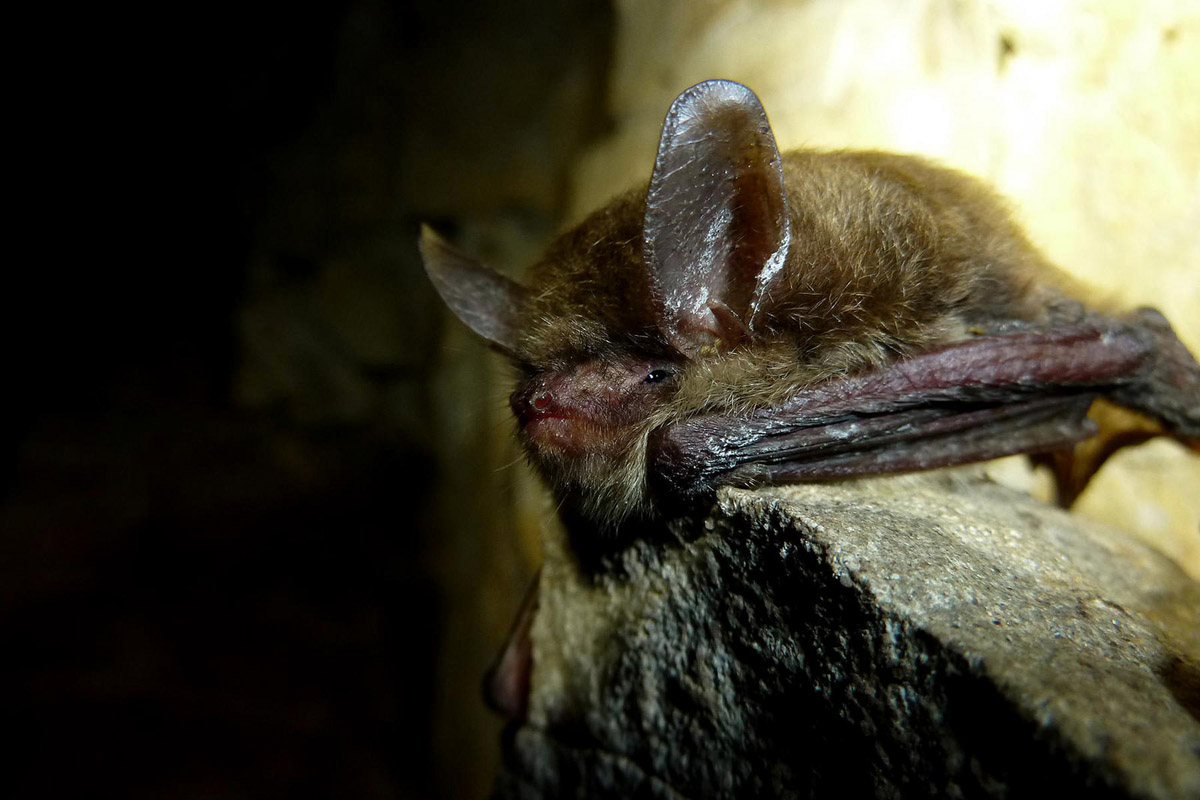White-nose syndrome is a deadly disease that’s been killing bats in 27 states—including Pennsylvania.
It was first discovered in North America a decade ago. Researchers think it came over from Europe—possibly on the shoes of a tourist or caver.
The disease, which is caused by a fungus, affects bats that hibernate underground. And researchers surveying hibernating bats this winter have found plenty of reason for concern. In some of the sites Eastern Michigan University bat researcher Allen Kurta surveyed, numbers were down by as much as 60 percent.
LISTEN: “Threatened Bat Species Gets Federal Help”
Kurta says the main problem is that infected bats wake up more often than normal during hibernation.
“Because of those more frequent arousals, they run out of their fat by January, February—sometimes even earlier,” Kurta says. “And if they run out of fat, they’re in trouble.”
He says some of them fly out of caves looking for food in the winter. That’s not normal for bats. And they often end up dying in the snow.
This winter, Kurta visited Bumblebee Mine in Michigan’s Upper Peninsula, where he observed many bats had fallen into a pool of water.
“There were bats trying to crawl out of the water and up onto the rock,” Kurta says. “Some of them made it, but they just couldn’t go any farther. That wasn’t pretty. That was a lot of suffering. You could tell those animals were dying.”
Those bats were mainly little brown bats—one of the more common bat species. But other bat species are also being hit hard by the disease, particularly the northern long-eared bat. Kurta says before white-nose syndrome arrived, the northern long-eared bat was doing well. That’s not the case anymore.
“We’re having a harder time finding any northern bats,” he says. “And that’s not a good sign.”

A northern long-eared bat with white nose syndrome. In Pennsylvania, it’s estimated that 99 percent of hibernating bat populations have succumbed to the disease. Photo: Steve Taylor / University of Illinois
Things have gotten so bad for the northern long-eared bat that the species was listed as threatened last April. And this January, the U.S. Fish and Wildlife Service finalized a rule to spell out legal safeguards for the species.
“It protects that bat during its most sensitive life stages, while limiting the regulatory burden on the public and several different government agencies,” says Dan Kennedy, the Endangered Species Coordinator for the Michigan Department of Natural Resources.
The new rule, known as the 4(d) rule, bans what is known as “purposeful take.” That basically means you can’t intentionally harm or kill these bats anywhere. The rule also bans “incidental take”—which means you can’t accidentally harm or kill the bats—anywhere they’re hibernating in winter or raising young in June and July.
Hal Zweng of the Michigan Department of Transportation (MDOT) says the rule makes it easier to do construction projects year-round. But Zweng says MDOT will change its work plans to avoid cutting down trees in the summer. That’s because bats raise their babies in trees.
“We believe that [with] the majority of our projects going forward, we’ll do the tree removal work in the winter,” Zweng says.

Graphic courtesy U.S. Fish and Wildlife Service
But bat expert Allen Kurta is worried that still leaves a big loophole. The rule says you can’t harm or kill bats anywhere the federal government knows bats are raising young in summer. In fact, the federal government keeps a list of trees where bats have babies each year, and those spots are protected. But if a tree is not on this list, someone could cut it down.
“Virtually every tree out there that these bats use could be removed,” Kurta says. “And many of them are going to be removed in the summertime when there are maternity colonies inside, because no one has to look.”
Kurta says that means many bats raising their young this summer could still be unprotected. The Michigan DNR says part of the problem is that it has a good grasp on where northern long-eared bats hibernate, but they know less about where the bats spend the summer.
###
This story comes from our partners at Michigan Radio's Environment Report, a program exploring the relationship between the natural world and the everyday lives of people in Michigan.
